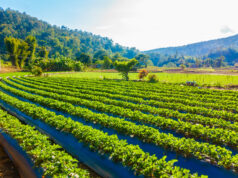
In the pursuit of a more sustainable future, agriculture stands as a critical sector that requires innovative solutions to meet the demands of a growing global population while minimizing its environmental impact. One promising advancement in this field is the use of residential or commercial LED lighting systems to optimize crop growth. This technology not only boosts plant productivity but also offers a range of benefits that contribute to sustainable agriculture.
Understanding LED Lighting in Agriculture
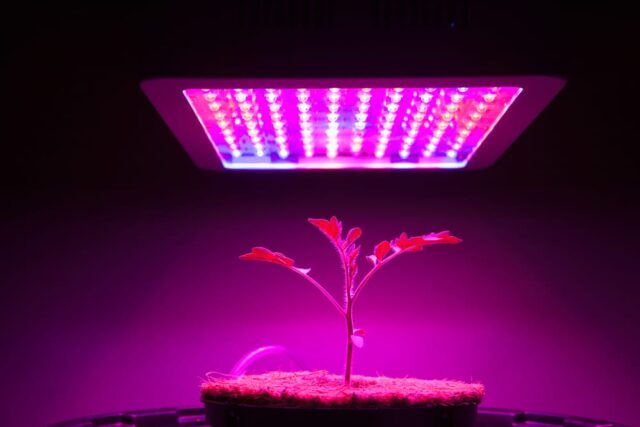
Both residential and commercial LED lighting, once primarily associated with electronics and displays, has found a new application in agriculture. Unlike traditional lighting methods such as high-pressure sodium (HPS) and fluorescent lights, LEDs are designed to emit specific wavelengths of light that cater to the unique needs of plants. These wavelengths can be tailored to different growth stages, creating a more efficient and targeted lighting solution for crops.
Benefits of LED Lighting in Crop Growth
Together, let’s discover the profound impact of LED lighting on crop growth and the agricultural landscape. From energy efficiency to customizable light spectra, explore how this innovative technology revolutionizes farming practices while promoting sustainability and higher yields.
- Energy Efficiency: One of the standout features of LED lighting is its energy efficiency. LEDs consume significantly less energy compared to traditional lighting methods, translating to reduced electricity costs for farmers. This energy efficiency is a crucial aspect of sustainable agriculture as it lessens the overall carbon footprint of farming operations.
- Customizable Light Spectra: Different plant species and growth stages require varying light spectrums for optimal growth. LED lighting can be adjusted to emit specific wavelengths, promoting photosynthesis, flowering, and fruiting. By tailoring light to the needs of plants, farmers can achieve higher yields and faster growth cycles.
- Reduced Heat Generation: Unlike conventional lighting systems, LEDs emit very little heat. This characteristic not only reduces the risk of crop damage due to overheating but also lessens the need for additional cooling systems in indoor farming setups. The overall result is a more controlled and stable growing environment.
- Longevity & Durability: LED lighting systems have a longer lifespan compared to traditional bulbs, reducing the frequency of replacements. This not only saves costs but also minimizes electronic waste, contributing to a more sustainable agricultural practice.
- Water Efficiency: Residential or commercial LED lighting can be positioned closer to plants without causing harm. This proximity allows for better light absorption, potentially reducing the need for excessive watering. By enhancing water efficiency, LED-illuminated farming aligns with the goal of sustainable resource management.
Applications of LED Lighting in Agriculture
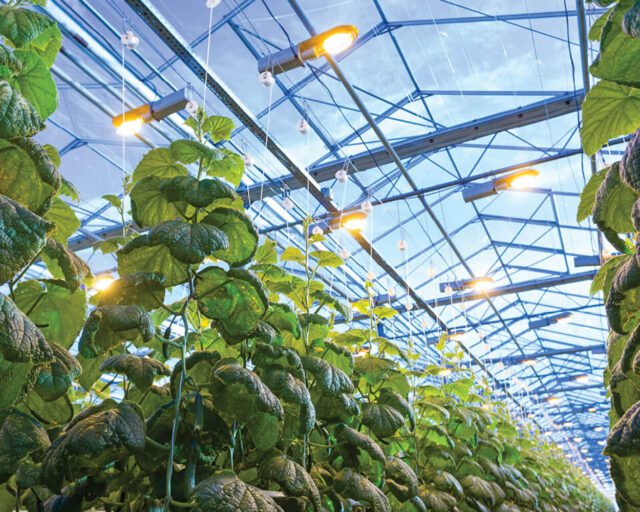
Now, let’s unveil the diverse applications of LED lighting in agriculture, reshaping the way we cultivate crops. From vertical farming to greenhouses and controlled indoor environments, delve into how LED technology optimizes growth conditions, extends growing seasons, and fosters innovation across the agricultural spectrum.
- Vertical Farming: Vertical farming involves cultivating crops in stacked layers, often in urban environments. LED lighting plays a crucial role in this approach by providing consistent and adjustable light to plants regardless of their position within the stack. This method maximizes space utilization and allows year-round cultivation.
- Greenhouses: LED lighting can be integrated into greenhouse systems to supplement natural sunlight or provide illumination during cloudy days and winter months. By tailoring light spectrums to match the outdoor conditions, farmers can ensure optimal growth and yield.
- Indoor Cultivation: For crops grown entirely indoors, such as in warehouses or converted shipping containers, LED lighting provides the primary source of illumination. The ability to fine-tune light spectrums and intensity is especially advantageous in these setups, as it mimics natural sunlight more effectively.
- Research & Experiments: LED lighting enables researchers to conduct controlled experiments on plant growth by manipulating specific wavelengths and light durations. This capability not only advances our understanding of plant biology but also contributes to the development of more efficient agricultural practices.
Advancing Sustainability through LED Technology
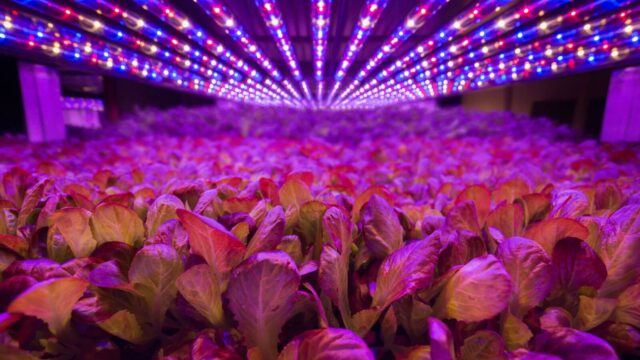
The intersection of technology and agriculture has always borne fruitful results, and the incorporation of LED lighting in agricultural practices serves as a testament to this union. As we further delve into the potential of LED technology, its implications go far beyond just sustainable agriculture; it’s about redefining the paradigms of food production.
Economic Implications
The integration of LED lighting in agriculture can lead to significant cost savings for farmers. Given that energy constitutes a major portion of farming expenses, especially in controlled environments, LEDs’ energy efficiency can dramatically reduce overhead costs. Over time, these savings can lead to lower food prices, benefiting consumers and contributing to economic stability.
Promotion of Urban Agriculture
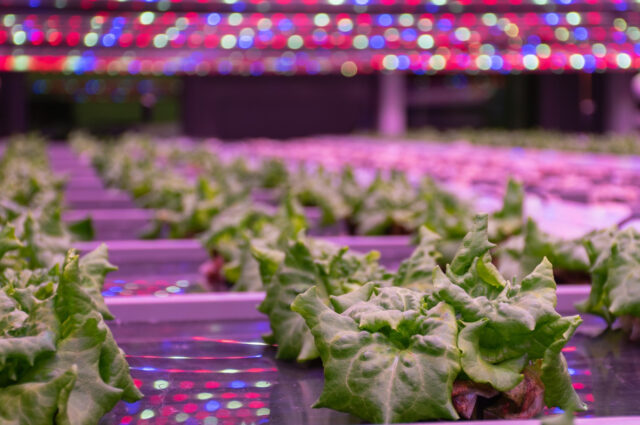
One of the most exciting prospects of LED technology in farming is the potential it holds for urban agriculture. With cities becoming increasingly populated, there’s an urgent need to find innovative ways to feed the urban populace. LED-enhanced vertical farms and indoor gardens can thrive in urban settings, producing fresh produce right at the heart of cities, reducing transportation costs and associated emissions.
Bioactive Compounds & Nutritional Enhancement: Recent research has suggested that manipulating light wavelengths using LEDs can not only optimize plant growth but also boost the nutritional content of the produce. For example, certain wavelengths can enhance the production of antioxidants in plants. As a result, consumers get access to healthier, nutrient-rich foods, underscoring the health benefits of LED-aided cultivation.
Climate-Resilient Farming: Climate change poses significant challenges to traditional farming. Unpredictable weather patterns, prolonged droughts, and extreme conditions can devastate crops. LED lighting in controlled environments can provide a consistent and stable setting for crop growth, irrespective of external conditions. This means that even in the face of adverse climatic changes, food production remains steady.
Supporting Biodiversity: With controlled environments becoming more prevalent, there’s an opportunity to cultivate a wider variety of crops. This diversification is not only beneficial for the market but also helps conserve plant biodiversity. As different plants have unique light requirements, LEDs can be programmed to cater to each species’ needs, ensuring their preservation and proliferation.
Growth for the Future
As sustainable agriculture gains prominence in the global discourse, innovations like residential and commercial LED lighting are transforming traditional farming practices. By harnessing the power of specific light spectrums, this technology enhances crop growth, reduces energy consumption, and offers a range of environmental benefits. As we continue to develop and refine lighting systems for agriculture, we move closer to a more sustainable and food-secure future.

